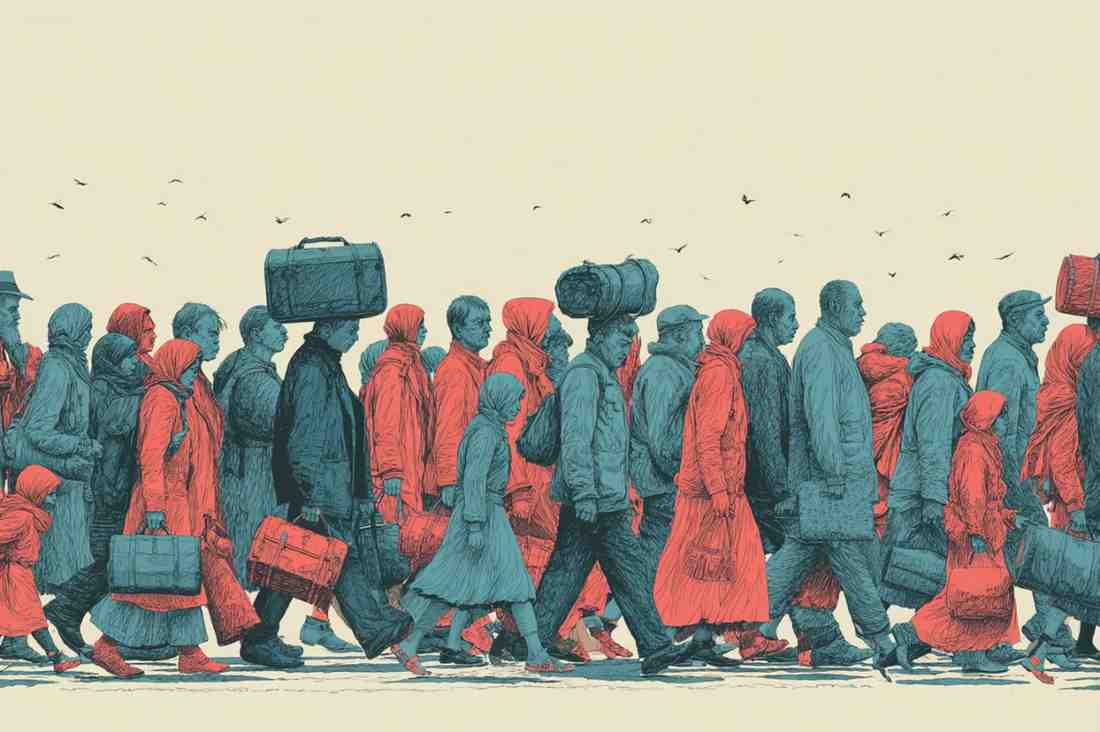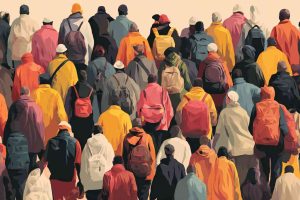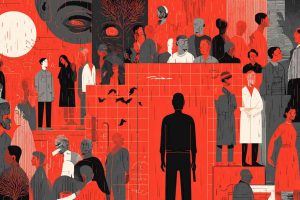Immigration and its impact: mainly negative for Western societies

Migration has always shaped cultures and economies. In today’s globalized era, however, the scale, speed, and policy frameworks surrounding migration have changed the equation. Advocates point to diversity, economic growth, and demographic renewal. Yet in practice, many Western democratic societies experience costs that outweigh the promised benefits. Large, poorly managed inflows combine with weak integration, welfare pressure, cultural fragmentation, and political tension. The result: the theoretical upsides often fail to materialize, while the downsides accumulate.
Quick overview: touted advantages vs real-world outcomes
| Claimed advantage | Theory | Why it rarely applies in today’s Western context |
|---|---|---|
| Workforce expansion | Migrants fill labor shortages and raise productivity. | Inflows are often low skilled, depressing wages for local low and mid earners while increasing welfare costs. |
| Cultural enrichment | Diversity sparks creativity and exchange. | Parallel communities form when integration fails, leading to fragmentation instead of enrichment. |
| Demographic renewal | Younger migrants offset aging native populations. | Required numbers are huge, reshape national identity, and create long-term fiscal and social burdens. |
| Innovation & entrepreneurship | Some migrants start businesses and create jobs. | Benefits are concentrated among skilled groups; broad migrant flows do not mirror Silicon Valley success stories. |
| Humanitarian duty | Hosting the vulnerable shows moral leadership. | Systems are overwhelmed; economic migrants often mix with asylum flows, straining public support and services. |
Potential advantages of migration (and why they rarely apply)
Economic growth through workforce expansion
In principle, more workers can increase output, fill shortages, and support pension systems. The real migration mix in many Western countries is heavily tilted toward lower skilled or under-credentialed arrivals. Credential mismatch, language barriers, and regulatory hurdles reduce productivity. Wage competition hits domestic workers in sectors like construction, logistics, agriculture, hospitality, and low-wage services. Where migrants rely on public assistance while integrating, any short-term labor gain is offset by fiscal cost.
Cultural diversity and enrichment
Limited, reciprocal cultural exchange can broaden a society’s artistic, culinary, and intellectual landscape. Problems arise when migration volumes exceed the host society’s integration capacity. Residential segregation and policy fragmentation encourage cultural silos. When newcomers cluster in enclaves, mutual contact falls, trust declines, and native cultural continuity weakens. Host populations often come to see diversity not as shared enrichment but as institutional strain and cultural displacement.
Demographic balance
Aging populations and low birth rates drive policymakers to view migration as a demographic patch. Yet the scale required to “fix” age pyramids is so large that it transforms the cultural and political profile of receiving countries faster than institutions can adapt. Public services (schools, healthcare, housing) must expand rapidly. Intergenerational tensions grow when taxpayers perceive that the demographic solution imports dependency faster than contribution.
Innovation and entrepreneurship
There are high-profile cases where skilled migrants become inventors, founders, or investors. These successes are real but not representative. Broad humanitarian or economically unfiltered migration flows do not reliably deliver a high share of STEM or capital-rich entrepreneurs. Without selective criteria, the innovation argument becomes anecdotal rather than systemic.
Humanitarian and moral commitments
Offering refuge to people fleeing war or persecution is a moral impulse widely supported in principle. Strain emerges when asylum systems are used as back-door economic migration channels, when claims overwhelm processing capacity, or when return policies fail. Public trust erodes, and support for genuine refugees declines when the system is perceived as unmanaged or abused.
Why the promised benefits collapse in the modern context
Three structural forces explain why theory breaks down:
- Scale vs integration capacity: Social institutions (schools, language training, housing, courts, labor market systems) scale slowly. Migrant inflows often scale fast.
- Selection mismatch: Policy frameworks built around humanitarian claims or broad-family reunification do not align with labor-market needs or fiscal sustainability.
- Institutional incentives: NGOs, supranational bodies, and domestic political factions can benefit from higher inflows, even when public services and social cohesion deteriorate.
When these forces combine, the outcome is not balanced demographic renewal but cost layering: fiscal draw, cultural fragmentation, and political backlash.
Negative consequences of modern migration
1. Economic burden on public finances
Where migrant households use more in welfare, healthcare, schooling, translation services, and housing subsidies than they contribute in taxes, the net fiscal position turns negative. This is most evident when labor-market participation lags or when large numbers lack skills that translate into higher-wage taxable work. Budget stress crowds out spending on natives who already struggle with cost of living, pensions, and healthcare waiting lists.
2. Wage pressure and labor-market stratification
Low-skilled migrants increase labor supply in bottom-tier sectors. Employers benefit from cheaper labor, but native low-income workers face suppressed wages or displacement. Training incentives for locals decline when cheap labor is available. Long term, economies risk locking whole sectors into low-wage equilibrium instead of investing in productivity and automation.
3. Social fragmentation and declining cohesion
Rapid demographic change without shared civic norms reduces generalized social trust. Parallel school tracks, religious enclaves, language barriers, and differing expectations around law, gender norms, and public space all contribute. Trust is a key predictor of economic performance, democratic stability, and voluntary tax compliance; erosion carries compounding costs.
4. Housing scarcity and infrastructure stress
Migrants require housing immediately; supply expansion takes years. Urban rents rise, starter homes become unaffordable, waiting lists for social housing lengthen, and political anger builds. Transport, schools, and healthcare systems in high-immigration regions become overloaded, degrading service quality for everyone.
5. Education system strain
Schools absorb language instruction, trauma support, catch-up tutoring, and cultural mediation. Teachers divert time from curriculum to integration management. Classroom standards suffer when resources are thin and student proficiency gaps widen.
6. Security, crime, and screening failures
Mixed flows (refugees, family reunification, undocumented entrants, trafficked persons) complicate screening. Even low incident rates can have outsized political impact. Serious crime clusters or terror-linked cases tied to migrant channels reduce public trust in border policy and can drive securitarian politics.
7. Political polarization and institutional stress
Migration becomes a proxy for wider grievances: inequality, nationalism, sovereignty vs supranational governance, cultural identity, and trust in elites. Parties polarize; coalitions fracture; speech norms harden. Democracies can drift toward censorship, emergency powers, or heavy-handed policing to contain unrest tied, directly or indirectly, to migration disputes.
8. Value clashes and erosion of liberal norms
Some incoming communities hold traditional, religious, or collectivist norms that sit uneasily with liberal democratic expectations on gender equality, free expression, sexual minorities, or secular law. If integration policies are weak, illiberal subcultures persist and pressure local governance, from schools to local councils to policing priorities.
9. Long-term dependency cycles
Second- and third-generation integration is not automatic. If migrant families are concentrated in low-opportunity districts, children inherit reduced social mobility. Welfare dependency can persist across generations. Political narratives then harden: one side points to “systemic exclusion, ” the other to “failed integration, ” while the fiscal liability grows.
Policy implications: what would have to change
If Western democracies wish to reduce the negative impacts of modern migration, reforms must address both volume and composition:
- Merit- and skills-based selection aligned with labor shortages and wage floors.
- Strict differentiation between refugee protection and economic migration, with fast adjudication and fast return where claims fail.
- Integration benchmarks tied to language, civics, and self-support timelines for permanent status.
- Fiscal tests: require demonstrated net contribution or sponsor-backed liability for welfare costs.
- Regional development instead of relocation: invest in stabilizing origin countries to reduce push factors where feasible.
- Data transparency: publish long-horizon fiscal, crime, welfare, and education outcomes by migration category so policy is evidence tested, not ideology driven.
Conclusion
Migration is not inherently harmful, but modern high-volume, low-integration migration into Western democratic societies has produced outcomes that are overwhelmingly negative. The gap between idealized benefits and lived reality widens each year under systems that privilege volume over selectivity, rights of entry over responsibilities, and short-term humanitarian impulse over long-term national cohesion. Without disciplined policy grounded in contribution, integration, and capacity limits, the burdens on public finance, social trust, and democratic stability will continue to mount.

















